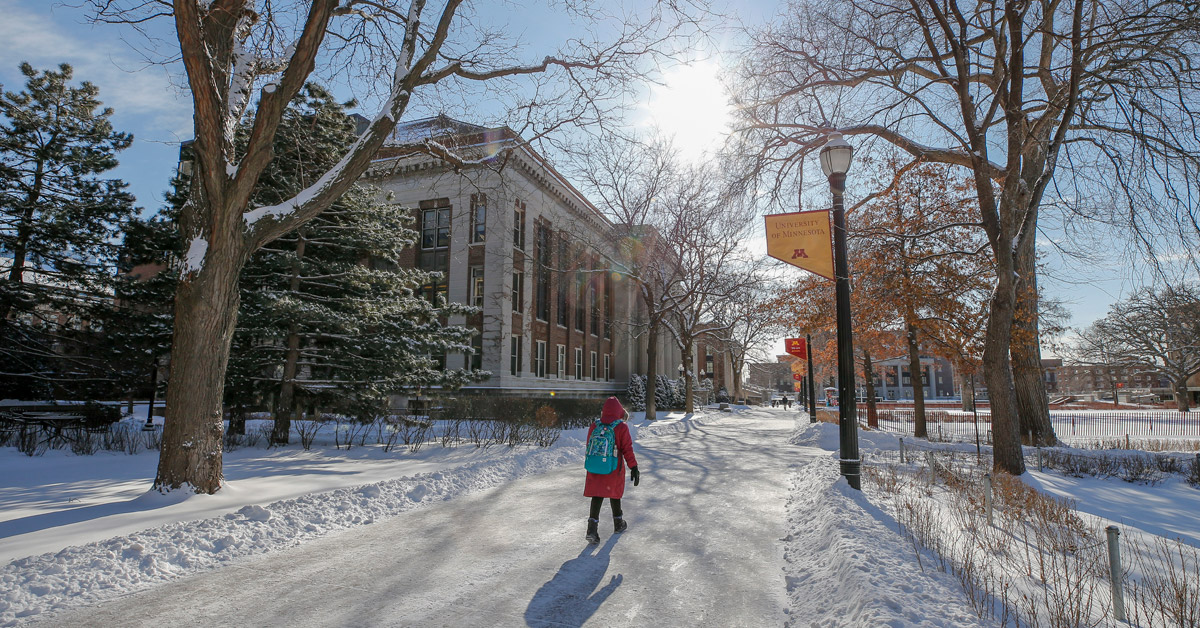Although this year was full of challenges on every front, it was also marked with success, innovation, honors, research discoveries, and new beginnings.
Many School of Public Health faculty, staff, and students added COVID-19 research and racial justice work on top of their ongoing and life-changing investigations into such issues as heart disease, cancer, and food security.
In the data, stories, and photos below, you’ll get a feel for the extraordinary dedication and energy that our community brought to its work during the most demanding year for our school, our country, and our world.
SPH thrived this year, even as we learned, taught, and worked mostly apart.
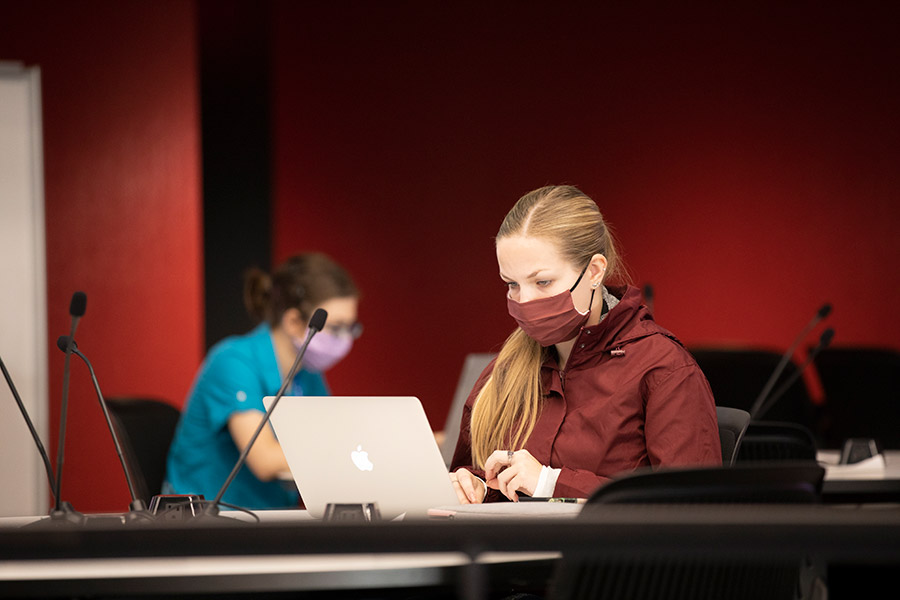
Our community in 2020
- 24 new staff
- 9 new faculty
- 11,851 living alumni
- 1,327 current students
- 478 incoming students for spring, summer, and fall 2020 semesters, combined:
- Enrollments were up 17%
- Black, Indigenous, and students of color made up 31% of students
- Students came from 22 countries, 39 states, and 236 undergraduate schools
E-learning takes center stage
In 1998, SPH began investing in e-learning and academic technology and the school now has one of the most talented e-learning groups on the Twin Cities campus. Under the leadership of Ellyn Buchanan and Sara Hurley, the team scrambled into action last March with SPH faculty and transferred some 90 courses from the real to the virtual classroom in less than two weeks. An example is PubH 6450 Biostatistics, which lecturer Marta Shore, in photo above, taught as a hybrid e-learning/in-person class. What the team and faculty have learned from this year’s experience assures that e-learning will continue to evolve as central to the school’s education mission for students and the public health workforce.
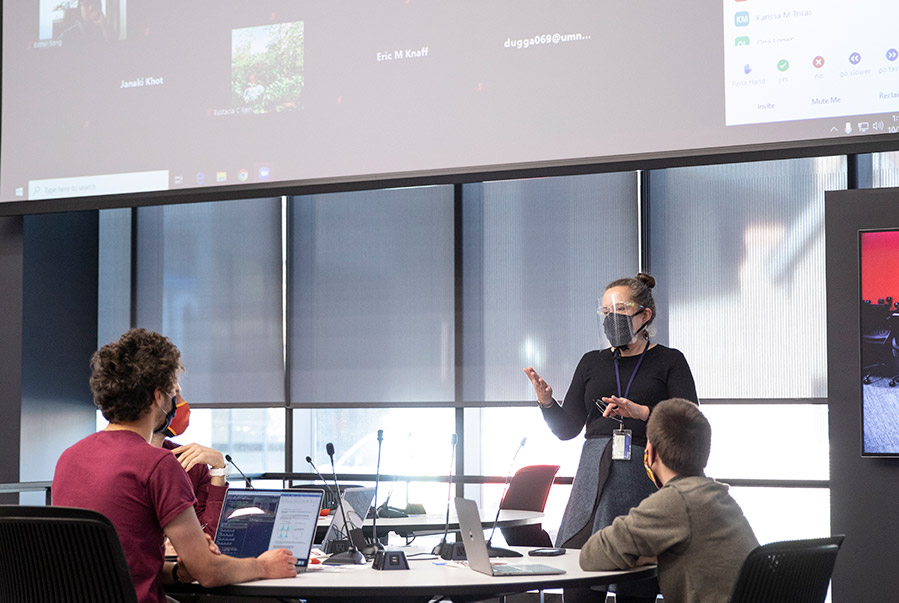
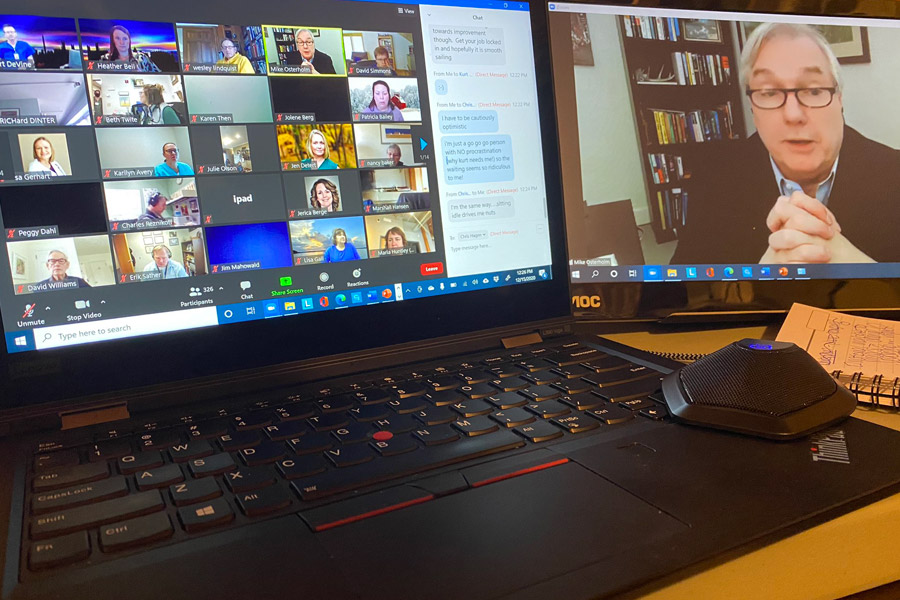
Running a school in virtual space
How do you lead and administer a school beset by the worst pandemic in a century? Enter Zoom. This versatile platform made it possible for us to keep going with the business and missions of the school, and even our interpersonal relationships, despite occasional “Zoom fatigue.” What’s more, attendance increased on average for school-wide events in the virtual space compared to in-person events. It also appears that Zoom gatherings helped the school bridge its more than half-century fragmentation in 10 buildings spread across the Twin Cities campus. But it’s important to remember that, whether virtual or in-person, it is the perseverance, patience, and commitment of our faculty, staff, and students that make our school a success.
The global pandemic: An SPH research timeline
The pandemic laser focused our attention in 2020. Here’s a high-level timeline of how COVID-19 progressed throughout the year and the SPH research that ensued.
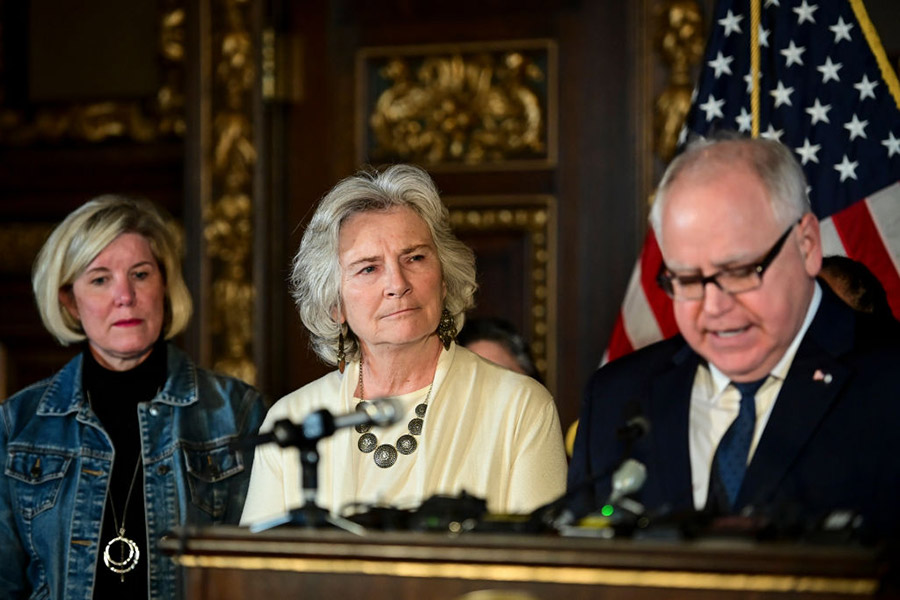
-
December 31, 2019
First report of an outbreak of coronavirus disease (COVID-19) in Wuhan, China.
-
January 21
The first U.S. case of COVID-19 appeared in Washington state and a Chinese scientist confirmed human-to-human transmission of the virus.
-
January 30
WHO declares the novel coronavirus outbreak “a public health emergency of international concern.”
-
March
SPH researchers Jude Mikal and Stuart Grande receive a UMN Rapid Response Grant to see if social media can be used to exchange helpful information and resources, and provide beneficial socio-emotional support during the COVID-19 pandemic.
-
March 6
First case of coronavirus is reported in Minnesota.
-
March 11
WHO declares the novel coronavirus (COVID-19) outbreak a global pandemic.
-
March 13
Minnesota Governor Tim Walz declares a peacetime state of emergency.
-
March 15
President Joan Gabel states that all University of Minnesota employees systemwide who are able to work remotely “should plan to do so beginning Monday, March 16 and no later than Wednesday, March 18.”
-
March 17
An SPH and Medical School partnership begins the first outpatient trials of hydroxychloroquine to see if the drug is effective in preventing COVID-19.
-
March 19
First Minnesotan dies from COVID-19.
-
March 23
Associate Professor Eva Enns and Professor Shalini Kulasingam co-create, with the Minnesota Department of Health, mathematical models to help Gov. Walz make his best decisions regarding COVID-19.
-
April
Associate Professor Ruby Nguyen begins raising awareness of and researching solutions for the rise in domestic and sexual violence during COVID-19.
Assistant Professor Gillian Tarr and Associate Professor Marizen Ramirez begin study to explore the extent of social distancing, its impact on community disease risk, and what factors affect people’s current contact patterns.
Associate Professor Susan Mason begins to study the effect of rapidly deploying school-based mental health providers to address child and family disruptions during COVID-19.
-
April 20
Associate Professor Ryan Demmer and team begin a study of SARS-CoV-2 infection in symptom-free Twin Cities health care workers.
-
May
SPH biostatistics faculty members Joe Koopmeiners, John Connett, James Hodges, and Tom Murray, and researcher Helen Voelker begin investigating the blood pressure drug losartan to see if it can prevent or limit lethal lung damage in people with COVID-19.
-
May 31
Professor Jim Neaton and his CCBR team begin enrolling sites around the world for a major global clinical trial funded by NIH and Operation Warp Speed to test a class of treatments that could potentially neutralize SARS-CoV-2, the virus that causes COVID-19.
-
August
SPH PhD students Jessica Friedman and Junia N. de Brito receive a Healthy Foods, Healthy Lives Institute grant to determine the pandemic’s impact on food insecurity, psychological distress, and unhealthy changes in weight-related behaviors among mothers.
SPH lecturer JP Leider finds that after accounting for age and demographics, Black Minnesotans are experiencing COVID-19 deaths at over five times the rate of white Minnesotans.
-
September 28
World reaches 1 million deaths from COVID-19.
-
October 15
Assistant Professor Jesse Berman publishes findings on the drop in air pollution during the pandemic.
-
December
Professor Craig Hedberg begins study of Minnesota grocery workers to assess their risk for COVID-19.
-
December 14
First person in U.S. receives COVID-19 vaccine.
-
December 15
First Minnesotan receives COVID-19 vaccine.
-
December 22
By this date, more than 400,000 people in Minnesota have tested positive for COVID-19; more than 5,000 people have died.
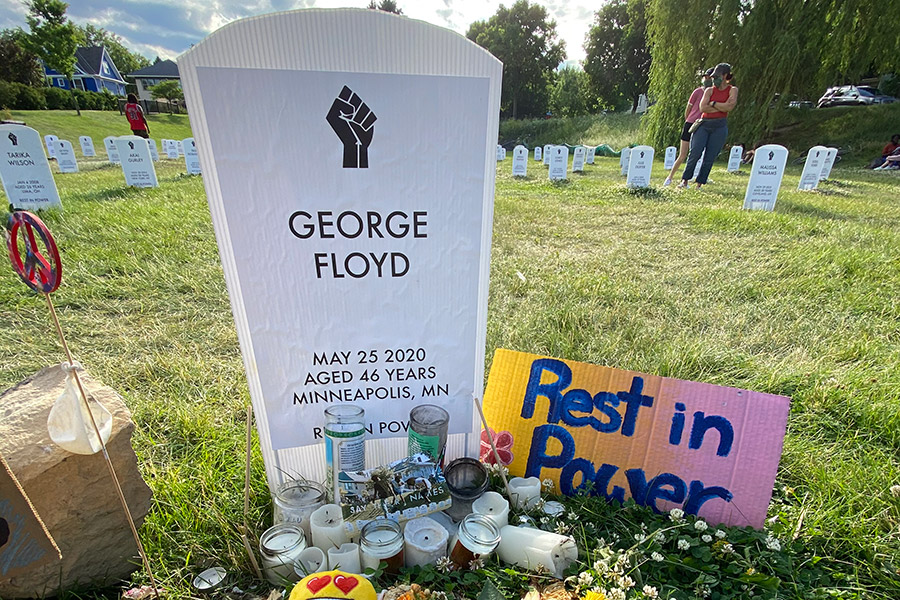
Advancing racial justice and health equity
On May 25, George Floyd was killed in Minneapolis — just four miles from the U of M campus — and his murder reverberated throughout the world. This tragedy inspired groups of students, faculty, staff, and alumni to demand accountability and lasting changes at SPH around diversity and equity. As we confront racism and inequity in our teaching, research, engagement, and school community, our school needs to prove that our efforts are a fundamentally new way of being. And we are learning how to become actively and sustainably anti-racist.
At the time of George Floyd’s death, our faculty and students were examining health inequities and the damages of racism. Their work continues unabated and is increasing.

Reducing violent encounters
Police are three times more likely to kill Black men compared to white men. PhD student Collin Calvert led a study, co-authored by faculty Rhonda Jones-Webb and Sonya Brady, into how to reduce these deaths. One finding was that routine, peaceful experiences with officers in communities did a lot to build trust between residents and police.
Caring for immigrant workers
Minnesota dairy producers, like those in the rest of the U.S., could not manage without immigrant workers, most of whom are Spanish speakers. The Immigrant Dairy Worker Health and Safety Project (part of the Upper Midwest Agricultural Safety and Health Center (UMASH) at SPH), has been working with this population for several years and is now developing and adapting COVID-19 prevention recommendations for producers and agricultural workers in Spanish and English, says Chela Vázquez, project coordinator and trainer. It is also making in-person health and telehealth services in Spanish accessible to agricultural workers around Rochester, MN, through a partnership with Community Health Services, Inc.
Watch a video short (3:58 min.) about the project from the documentary Our Invisible Guardians.
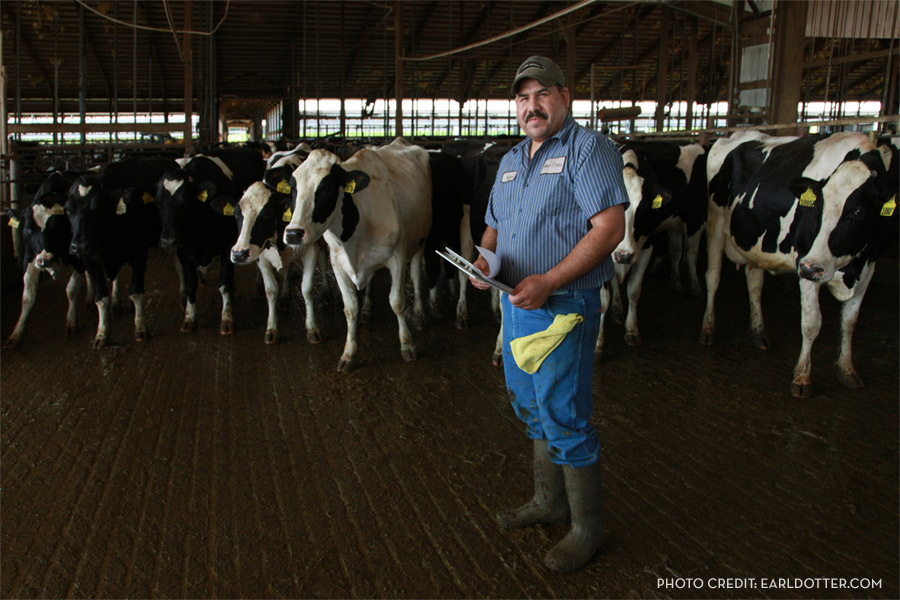
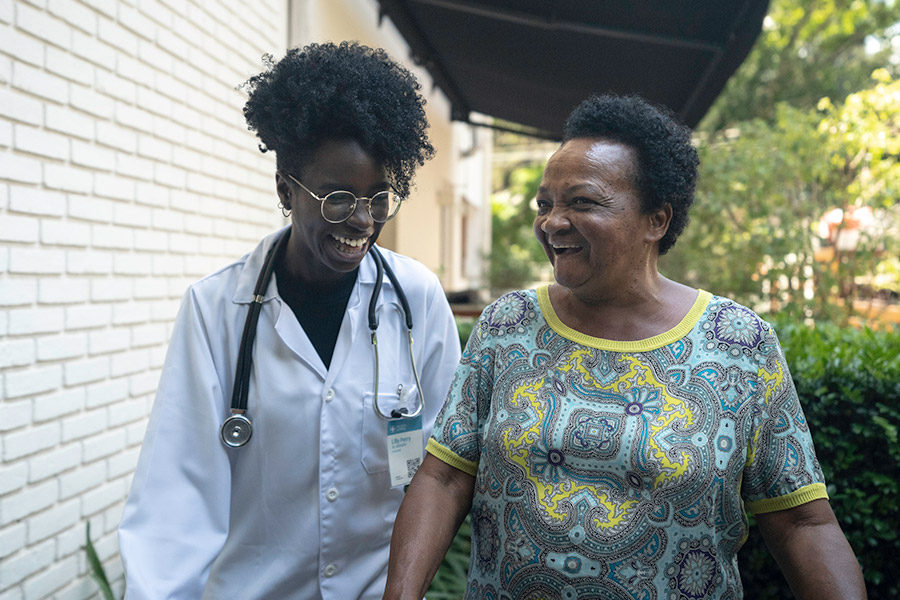
Equal quality of life
Associate Professor Tetyana Shippee is driven by one question: How can we make care toward the end of life a more positive experience, regardless of race, ethnicity, or culture? Her recent research found that compared to white residents in nursing homes, Black, Indigenous, and residents of color have a significantly lower quality of life, no matter the racial/ethnic composition of the facility. “We need to better understand factors that impact experience of care for these groups and make sure that they have a voice in their care,” says Shippee.
Black newborns and Black doctors
In the U.S., Black newborns die at three times the rate of white newborns. But research from Associate Professor and Blue Cross Endowed Professor of Racial and Health Equity Rachel Hardeman shows that the in-hospital death rate for Black newborns is a third lower when they’re cared for by Black physicians.
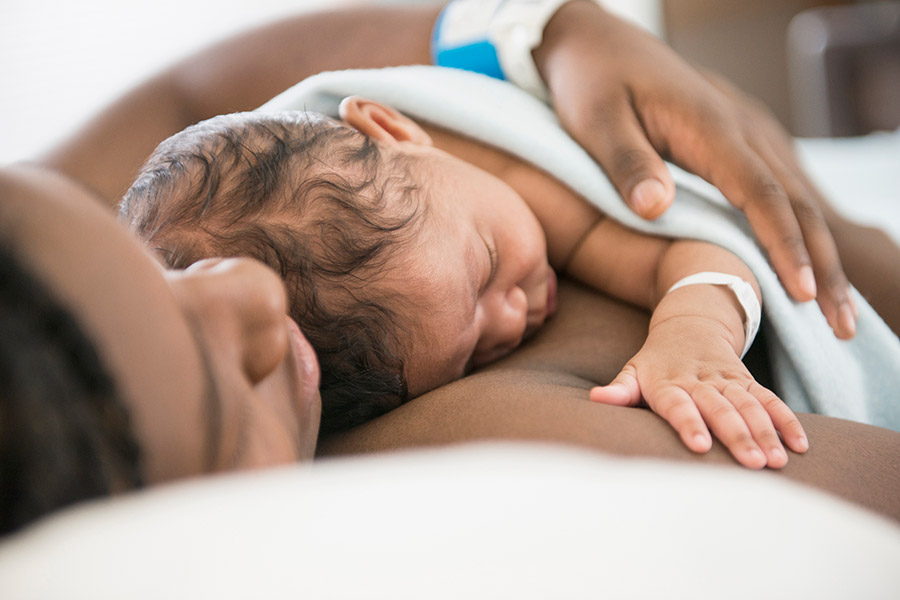
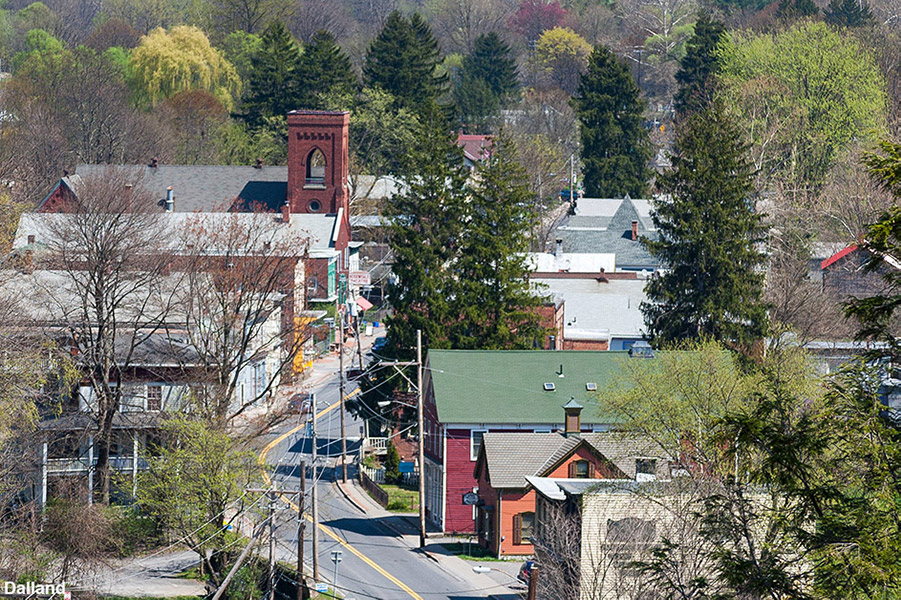
Where premature death rates are highest
In rural America, 1 in 5 residents is a person of color or a member of an Indigenous group. A study from Associate Professor Carrie Henning-Smith found that rural counties with a majority of non-Hispanic Black and majority American Indian/Alaska Native residents had up to double the rates of premature death compared with rural counties with a majority non-Hispanic white residents. “Rural areas can be very diverse and when we discuss rural-urban disparities in health, we’re missing part of the picture: there are significant racial differences in who has equitable access to good health in rural counties,” says Henning-Smith.
Expert guidance when the world needs it most
In 2020, SPH experts have been in the news at an astonishing rate, providing clarity to the media, policymakers, health care leaders, health departments, and others. This past year saw a 524% increase in media mentions featuring pandemic- or racism-related quotes or research from SPH faculty.
23,569
Total media mentions (Jan-Sep 2020)
86 per day
Average media mentions (Jan-Sep 2020)
6,958
Minnesota stories (Jan-Sep 2020)
12,759
National stories (Jan-Sep 2020)
3,781
International stories (Jan-Sep 2020)
Wise counsel for the U.S.
On November 9, President-elect Joe Biden named School of Public Health Regents Professor Michael Osterholm as a member of his Transition COVID-19 Advisory Board. Osterholm joins a small cadre of the most respected infectious disease experts in the world to help get the pandemic under control, avoid another spike in infections, and manage a vaccine roll-out.
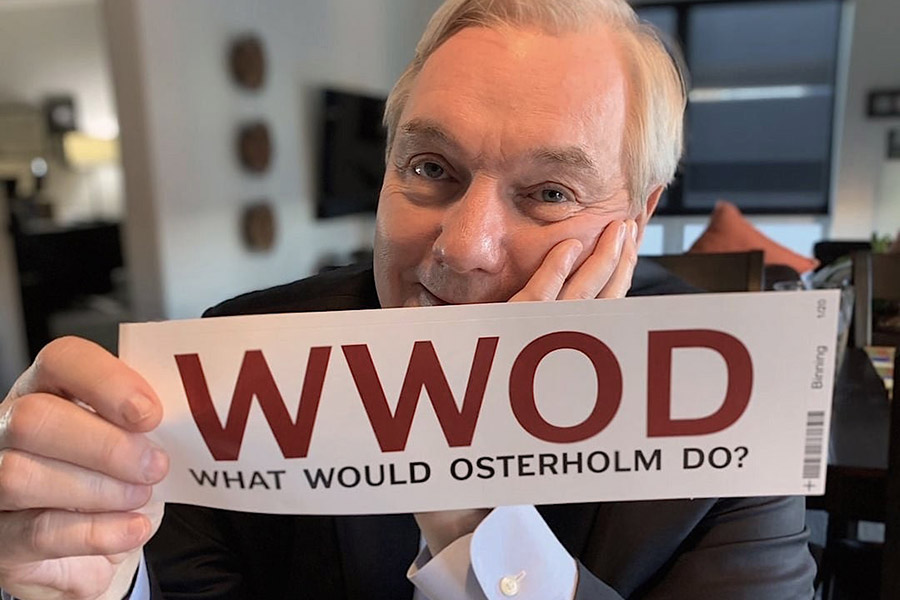
2020 SPH initiatives
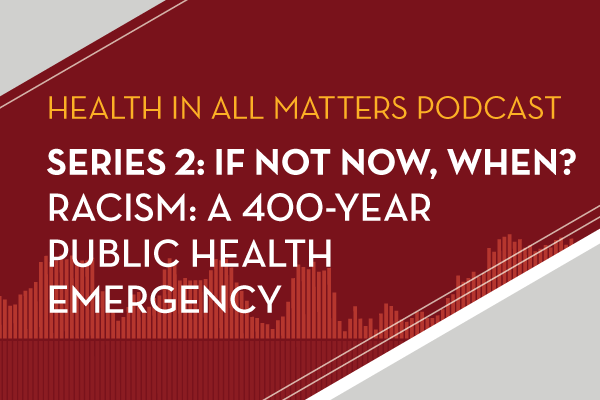
Podcast series explores COVID-19 and racism
The week in March when Minnesota closed all but essential businesses, the School of Public Health launched “Health in All Matters,” a podcast advised by a group of faculty, staff, and students and created to bring solid information and insights to its listeners. The first series, When a pandemic sweeps the modern world, explores various elements of COVID-19, from its origin to its ripple effects and was listened to more than 25,000 times. The second series, If not now, when? Racism: A 400-year public health emergency, tackles racism and public health and is accompanied by discussion questions for high school and college students and groups of eager learners.
Telling the story of public health
SPH produced a 30-minute documentary with Twin Cities Public Television (TPT) in early 2020 before COVID-19 changed our world. “Our Invisible Guardians: A modern story of public health” premiered in April 2020 and uses a fresh lens to view the story of public health and the unseen professionals who have been working tirelessly for over a century to save our lives and improve our health. Accompanying shorts include “Nikola Tesla’s Role In Public Health” and “A Brief History of Life Expectancy.”
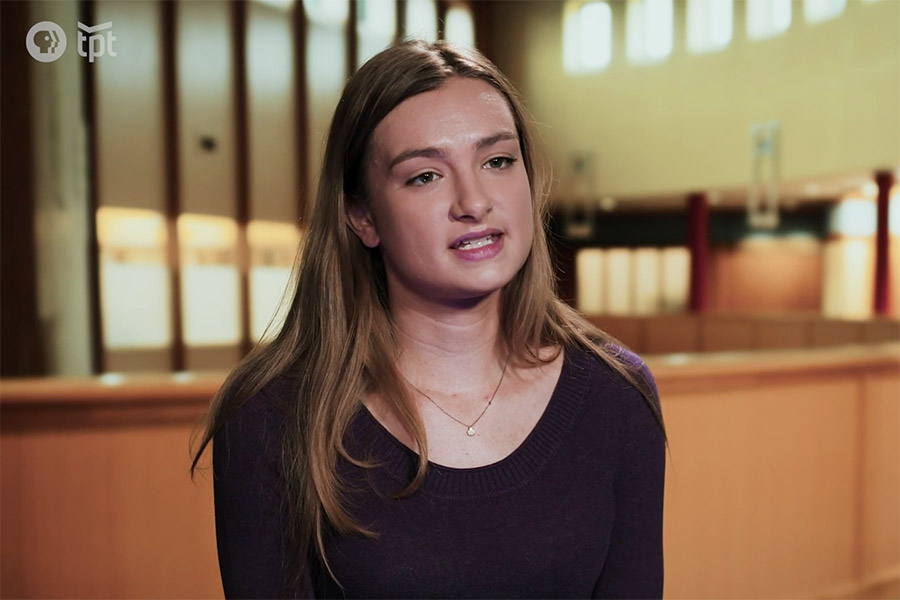
Further SPH initiatives:
- Public Health Center of Excellence on Dementia Caregiving — This CDC-funded center features a robust, engaged network of 17 leading national organizations that will make available tools, resources, and strategies to assist caregivers of people with dementia throughout the U.S.
- Center for Healthy Aging and Innovation (CHAI) — The former Center on Aging, founded by the late Professor Robert Kane, raised awareness for the imperative to study aging using rigorous science. Now it is reimagined as a place devoted to developing and improving ways for people to be happier and healthier as they age.
2020 research highlights
SPH holds the fourth largest research portfolio at the University of Minnesota. Below is just a sample of important findings from the past year. See more research on our website.
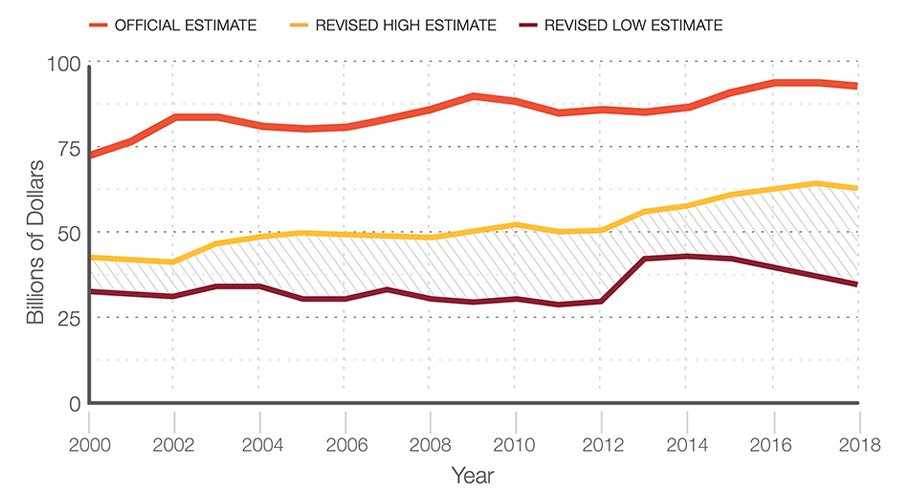
More accurate numbers
The U.S. federal government estimates that the nation spends $93 billion on governmental public health at the federal, state, and local levels out of the $3.6 trillion dedicated to health spending overall. But a study from SPH researcher JP Leider reveals that these federal estimates overestimate public health spending by as much as two-thirds. Actual public health spending is only $36 to $54 billion per year. On a per person basis, that’s about $286 spent on public health per year. In comparison, the government spends $10,739 per person on medical care — more than twice that of any other wealthy developed nation.
Gender pay gap
Research consistently shows that female physicians earn up to 30% less money than their male counterparts. Associate Professor Hannah Neprash found that female primary care physicians generate less revenue for clinics and practices because they spend more time with patients and have less time for additional appointments compared to their male colleagues. The finding dispels the commonly held opinion that female physicians work fewer hours than men.

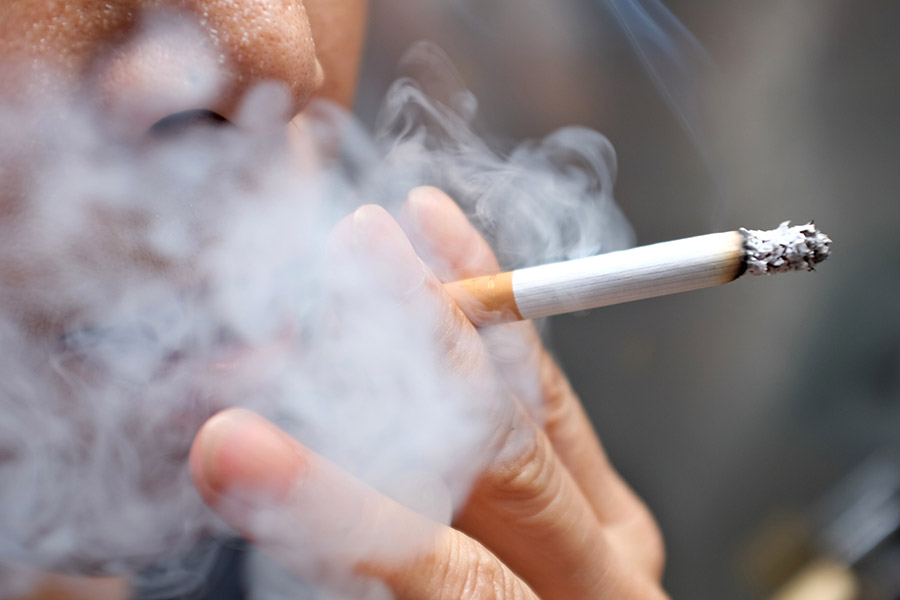
Help for quitting
American Indians and Alaska Natives (AI/AN) suffer disproportionately from smoking-related morbidity and mortality. Some tribes in Minnesota have asked to participate in research that helps their members quit. Previous research in white populations suggests nicotine metabolism rates can predict the best medication for a person to help them quit smoking. Assistant Professor Dana Carroll is studying how quickly AI/AN individuals metabolize nicotine and how the speed relates to their genetic makeup.
Awards, Recognitions, Changes
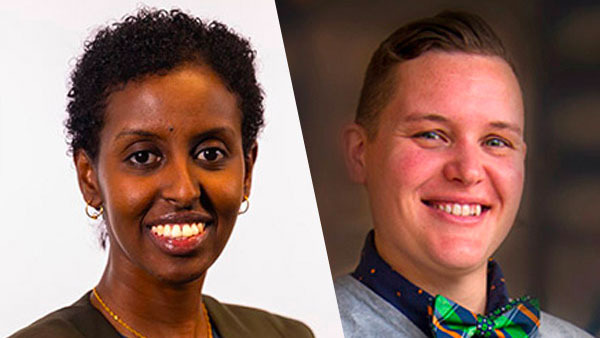
Visionary leaders
Minnesota’s Bush Foundation singles out visionary leaders who are solving problems and shaping a better future for their communities and awards them a Bush Fellowship. Among the 2020 Bush Fellows are Amira Adawe (MPH ’15), left, who leads the Beautywell Project, a community-based organization that aims to end skin-lightening practices and chemical exposures among women of color, and Ani Koch (MPH ’16), right, a senior program manager on the community integration team at Blue Cross and Blue Shield of Minnesota who aims to improve care and service for the most marginalized communities around the region and nation.
Other notable awards
- Associate Professor and Blue Cross Endowed Professor of Health and Racial Equity Rachel Hardeman: McKnight Presidential Fellow Award
- Professor Katy Kozhimannil: 25th Heinz Award in the Public Policy
- Professor Karen Kuntz: 2020 Career Achievement Award from the Society for Medical Decision Making
- Professor Melissa Laska: Distinguished McKnight University Professor
- Professor Dianne Neumark-Sztainer: McKnight Presidential Professorship
- Professor Emeritus Bill Toscano: Award for Global Engagement from the University’s Global Programs & Strategy Alliance
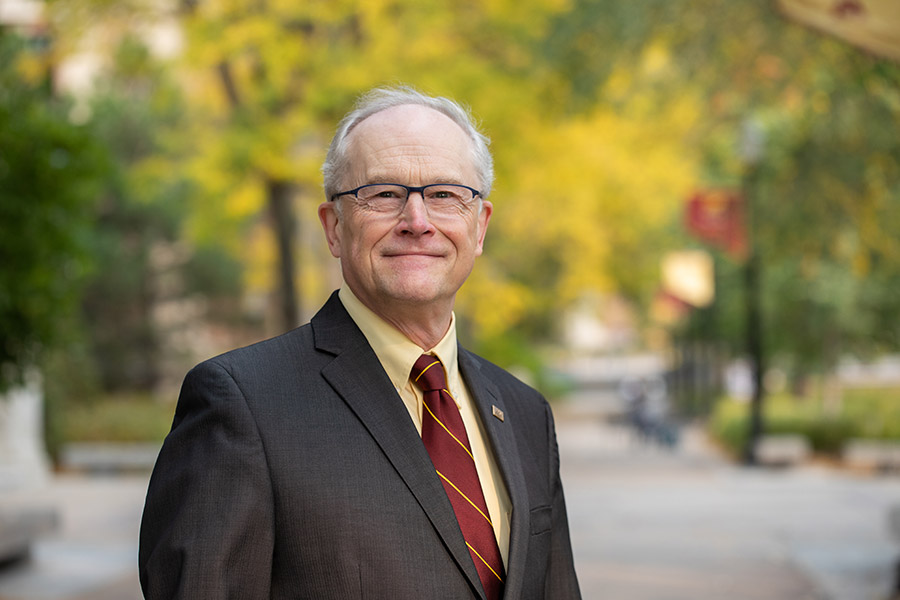
Finnegan to retire
University of Minnesota School of Public Health (SPH) Dean John Finnegan Jr. will retire in fall 2021 following a search for and installation of the eighth dean of the school. Finnegan has served as dean for 16 years and has been a member of the school faculty for 35 years. During his tenure, the school, which was founded in 1944, has maintained its ranking among the nation’s top 10 schools of public health and among the top 6 NIH-funded schools of public health in the nation.
New leadership
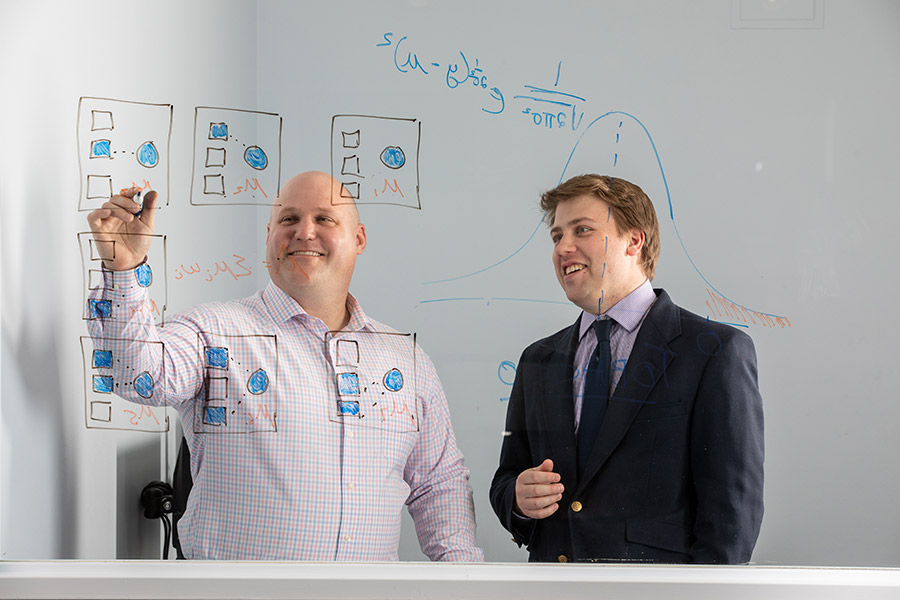
Leading Biostatistics
SPH named Professor Joe Koopmeiners, at left in photo with colleague David Vock, as Mayo Professor and head of the Division of Biostatistics on July 27. Koopmeiners had served as interim head since July 2018, and now leads the division on a continuing basis, advancing its reputation as one of the best in the country.
Faculty guidance
Biostatistics Professor Lynn Eberly will now oversee the support, development, progress, and success of SPH faculty as the Associate Dean for Faculty Affairs. She will also collaborate with leadership and faculty to ensure the effective recruitment, retention, and development of a diverse faculty, and that faculty compensations and opportunities are fair and equal.
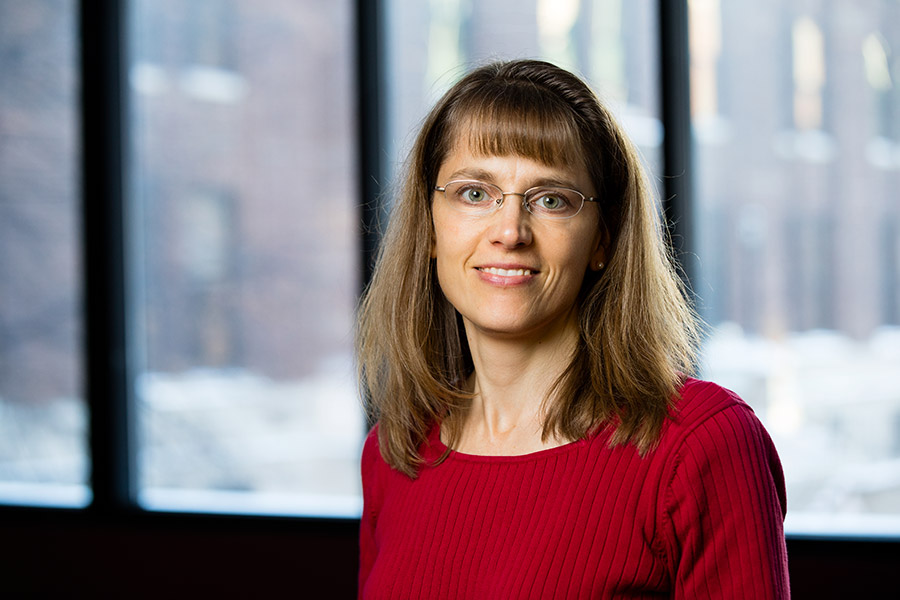
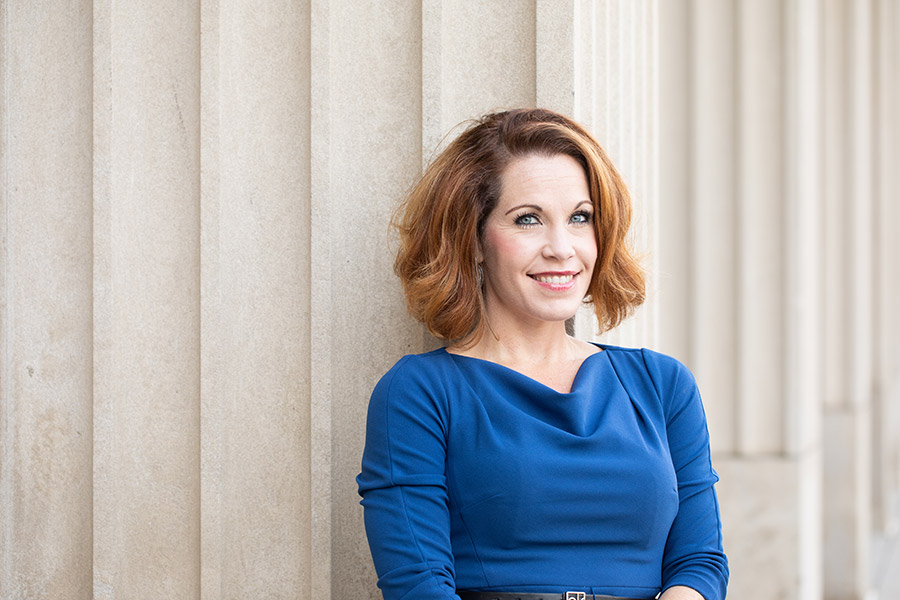
Supporting SPH
Jess Kowal is now the SPH Chief Development Officer and will support the success of the school’s final year of its $40 million Driven: Shaping a Future of Health campaign and philanthropic efforts in the years ahead.
